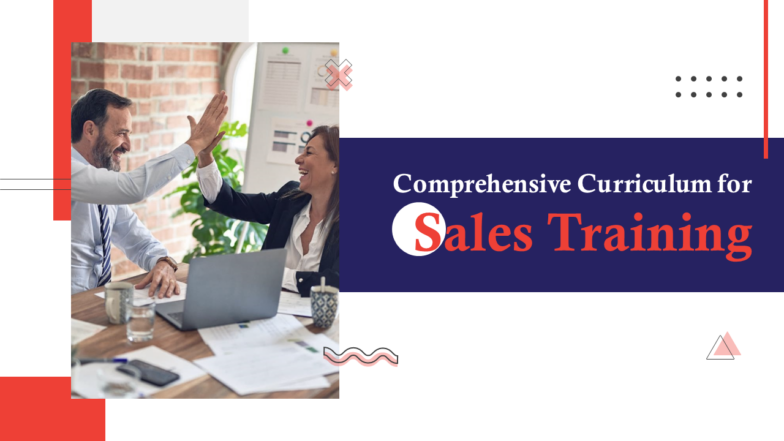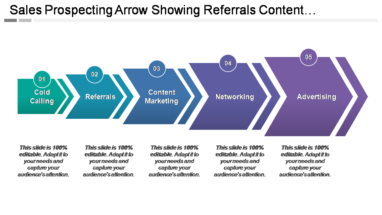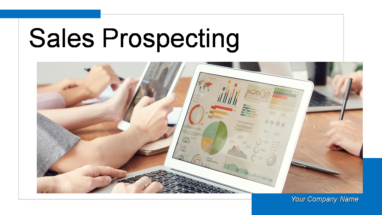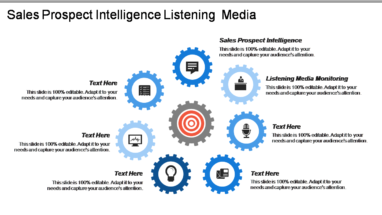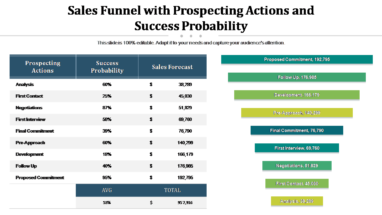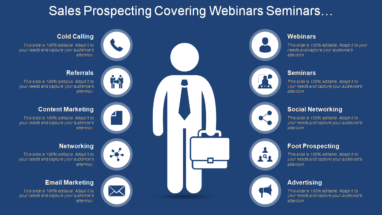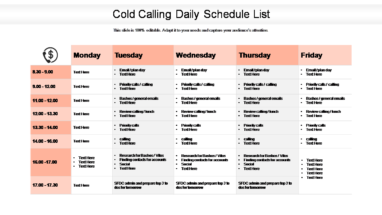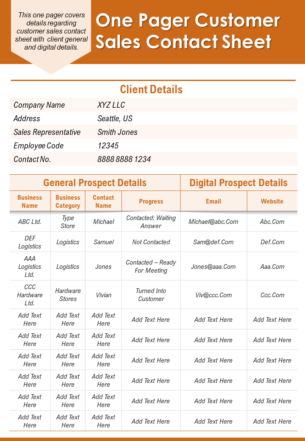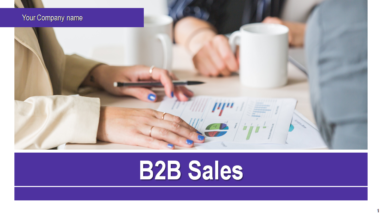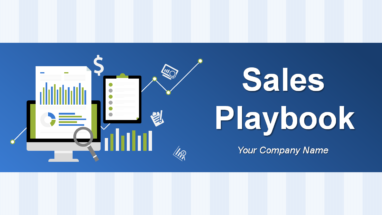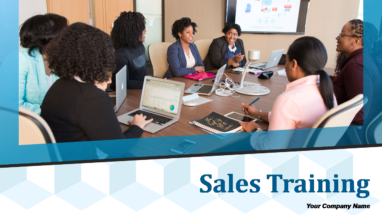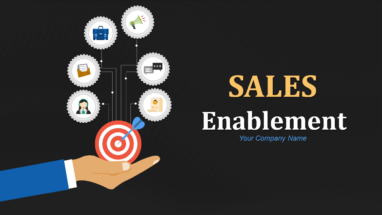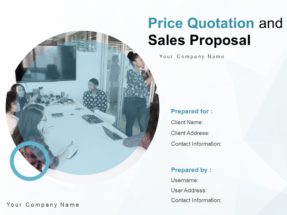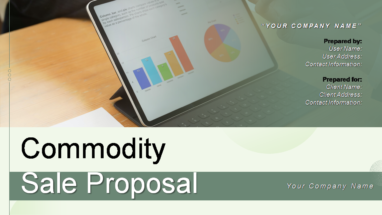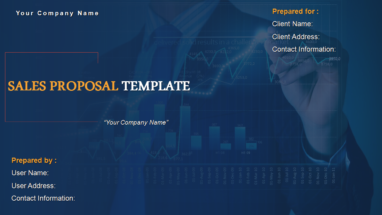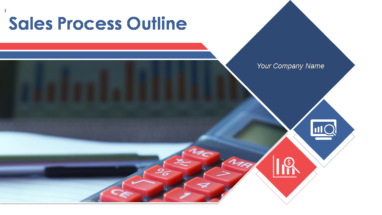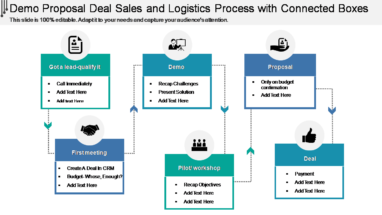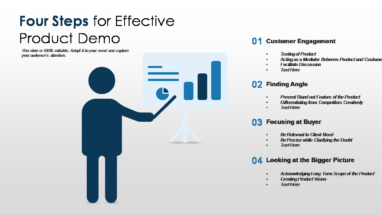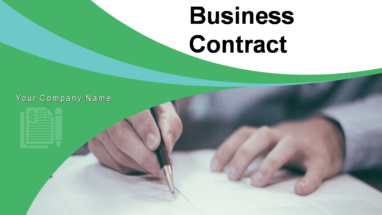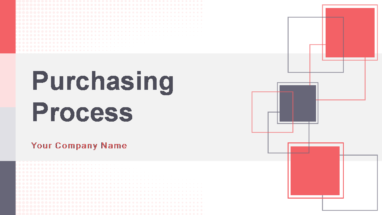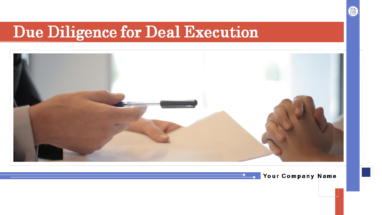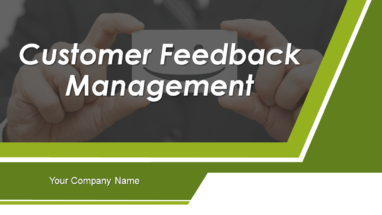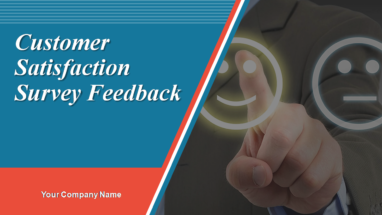The term ‘sales process’ may invite several astonished cries from a company that is habitual of selling every product in an informal fashion. And there’s no need to blame these go-getters as well. After all, managing sales demands you to be on your toes at all times. With their ears (and fishnets) at the ready, salespeople have to be on a flight mode to grab every opportunity there is.
But there’s a catch when it comes to how sales materialize today.
You see, today’s consumers are way more skeptical and way more informed than they were at the time when dishwashers had just rolled out. Thanks to the constant deluge of information readily available on mobile devices, convincing customers to buy a product needs more than just a chance email or a cold call.
So what’s the way out of this randomness and guesswork?
It’s time for you to have a formalized sales process for your company. This blog will shed light on why structure beats uncertainty every time while offering you handy PowerPoint templates for each step of your sales process. Also in tow are actionable tips that can help you become a sales whiz. Read on!
What is a sales process?
A sales process is a specialized iterative process that enables a sales representative to convert a potential buyer into a paying customer. It is the customer’s journey from a prospect to a closed deal with your business. A formalized sales process is the standard playbook for every sales rep in the company.
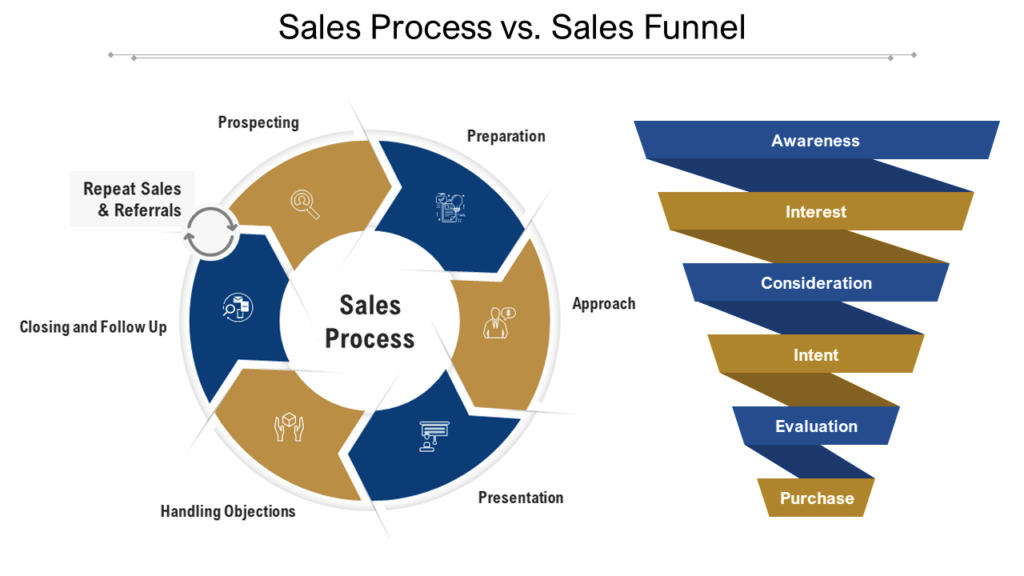
Not to be confused with sales funnel, which is a graphical representation of each customer interaction along the sales pipeline, a sales process is the roadmap that reps need to follow to strike a deal. In other words, a sales funnel is from the customer’s viewpoint, while a sales process is from the sales rep’s viewpoint.
But why have a sales process?
In any company, the very foundation is the sole revenue-generating activity – a sale. But even if the company’s sales managers had just winged it while closing the first deal, the generations of sales reps ahead have their seniors to look up to and learn from. In such a situation, it will not be feasible for a sales manager to teach the tricks of the trade to each newbie as efficiently as desired by the company.
Moreover, learning the ropes without definitive guidelines can lead to a lot of back and forth and time consumption. Besides, guesswork will stall closure rates for those who are not “born with a selling instinct”. Therefore, having a standardized sales process can help keep your sales activities in order besides boosting revenue.
Related read: Top 10 Sales and Operations Planning Templates to Cope With Market Volatility
Don’t take our word for it. Even top industry-specific research says so too!
Take a study by Harvard Business Review, for instance. It says that B2B companies with a well-accounted sales process can witness 28% more revenue than the companies that don't have one.
Another study by the institute indicates that close to half of the high-performing companies have a structured and automated sales process. In contrast, close to half of the under-performing companies had no sales process or were taking the informal selling approach.
These figures indicate that companies would do better to adopt a full-fledged sales process that serves as the blueprint for unlocking growth. Each study gives us an insight into how a well-structured sales process helps enhance revenue and performance. Therefore, establishing a formalized sales process is the hallmark of a business looking to become a customer favorite.
Before, we tour the PPT Templates, are you looking for a comprehensive module to train your sales team and improve their performance? Access our Sales Training Curriculum with content-ready, well-researched slides that will make your training program a terrific success!
Click Here to Download our Comprehensive Curriculum for Sales Training
Steps involved in a sales process
Charting out a comprehensive sales process can be tricky. The reason for that is the uphill climb while figuring out how to map a customer’s buying decisions with your sales process. But if you get your basics right, you can leverage a standardized sales process for all your selling endeavors. Basically, a sales process constitutes seven key steps as depicted below.

Let’s discuss these steps and explore the related PowerPoint templates that you can download and deploy to craft an unbeatable sales process. Each of these PowerPoint templates is designed by experts and researched by industry stalwarts. The formats are fully editable, so feel free to tweak these for maximum output.
1. Prospect
Prospecting kicks off a sales process roadmap as the most crucial part of it. By definition, prospecting involves identifying and research potential clients that will be interested in your product. Additionally, it constitutes a lot of market research and setting qualifying parameters for the prospective buyer.
You can also reach this prospective buyer by asking your existing clientele about their peers. The result is you have a set of leads that fulfill the criteria as per your unique value proposition (UVP). To start smart, here are the templates that will enable seamless prospecting on your end.
2. Approach
Once you lock your target, it’s time to make contact. The next step of the sales process involves establishing a connection with the qualified lead via engaging techniques like emails, cold calls, or other digital or print forms of communication. The plan here is to grab some eyeballs by gathering info on what keeps the prospective buyer up at night.
The approach step paves the way for a communication channel between you and your buyers. It also includes generating the lead’s interest in your product by engaging them with your product UVP. Since this is where a sales rep needs to step up their convincing game, the sales process must clearly define the medium to engage the buyer the most. The following PowerPoint templates will help you ace the game every time.
3. Interview
Get down to business. Ask all the right questions. Get to know what keeps the prospect fidgeting for a solution. In the sales interview, the sales rep strikes a conversation that helps them know the prospect better. These right questions come from proper research and brainstorming about the client beforehand.
The interview phase is also a good opportunity for the sales rep to impress the potential buyer with knowledge of their issues. Thus, you can assemble all the crucial info and use it in the following PowerPoint templates.
4. Proposal
The exercise to gather info specific to the customer’s issues gives you the roadmap to a closed deal. In the proposal step of your sales process, you will pitch your product or service as the tailored solution to the customer’s problem. With the pain points in mind, you need to prepare visuals and gather testimonials to support your proposal.
At this point, you are giving the buyer a chance to consider and research your company. So make sure you hit the nail on the head with a spectacular proposal. The following PowerPoint templates will let flexible design be your greatest weapon.
5. Demonstration
It’s time to walk the talk. Once you have had a preliminary discussion with the client and proposed your product or service, you have to demonstrate the customer’s problem getting solved. Your task is to schedule the demonstration and make arrangements as suited to the client.
During the demonstration, you have to hit the critical points while showcasing the advantages that the client will get once they associate with you. A good demonstration also focuses on the unique selling point of the product, which helps make the prospective client an informed choice. The following PowerPoint templates are your best companions for a demonstration.
6. Negotiate
Unless your product or service is one of a kind, you can stay assured that the prospect will be researching for alternatives at this point. Even your product demo at some point may not be able to answer all of their questions. Nevertheless, the client is in the deciding mode and will submit their objections and queries for a precisely tailored product or service.
As a sales rep, your job is to tackle each query at the negotiation step to allow further modifications in the product. The more precise is the solution, the better are the chances of closing the deal. The negotiation phase also gives you a chance to prepare your list of objection resolutions for the future. Download and utilize these PowerPoint templates for liaising the best deal.
7. Support
Once the negotiations lead to an agreement and contracts are finalized, the prospect makes a purchase, or, in sales vocabulary, the “deal is closed”. After that, the next step of the sales process is support, wherein you tackle all the issues, if any, that the client reports about the product or service. The support phase can also include extensive onboarding and follow-ups to ensure that you are off to a good start.
Support is a crucial part of a sales process as it opens avenues of repeat sales and upsells. Moreover, you can nurture your professional bond with the client and then ask for referrals to grow your client base. The following PowerPoint templates will make sales follow-up a breeze.
Effective tips for leveraging your sales process for faster deals
Whether you have put a solid workable sales process in place already or are working your way towards one, what doesn’t change is the salespeople’s flexibility. While learning and adapting to the changing course of a consumer’s journey, sales reps are responsible for listening and responding at every step of the way.
Therefore, sales representatives need to follow a proactive approach towards each of the seven steps of sales process to close deals. Here are some handy tips that you can use to exceed expectations.
1. Talk to the reps first
Before you devise your sales process, sit down with your team and get to know their sales tactics. How do they approach a prospect that moves them forward in the sales process? What do they do that leads to a sure-shot closed deal? Asking these questions will give you an idea of the strengths and weaknesses of your sales operations. Once you have gathered this knowledge, you can start describing your sales process.
2. Don’t give creativity a go-by
Following a structured approach does not trump creativity. In fact, it acts as the framework to accomplish lucrative deals the right way. This also includes using your gut instinct and creative flair to pose the right queries. Ultimately, selling will depend on how you use your skill and talent to draft your sales communication.
3. Have your customer in mind
Often sales managers think that a sales process is a to-do list for the sales reps. But they couldn’t be more wrong! What works while drafting a sales process is starting from the end result and then working your way to your company. The result here is the purchase decision made by the customer and what you do to make that happen. To ensure that the result is beyond promising, you must define your USP by being in the customer’s shoes. The bottom line is to show how your product or service will enable the customer to be in a better position.
4. Don’t rush it; build a connection
Modern-day consumers anticipate a special treatment of their problems instead of being another number in the sales analytics dashboards. Therefore, sales reps mustn’t rush the customer down the sales process and build a trustworthy relationship instead. Also, sales reps should ideate methods to offer value and a fruitful experience to the prospects. If the customers feel heard, they will be drawn towards your business.
5. Follow-ups are a must
Sure, a closed deal has its charm. But more often than not, sales reps tend to just log the numbers into a software and call it a day. They do not realize that follow-ups are their key to grow those numbers. Right from the point when the deal is closed, sales reps should maintain a balance of communication and assistance with the customer to develop a cordial relationship. This is why a formalized sales process matters as it serves as a key reminder for the sales team.
6. Reinvent your sales process
A well-structured sales process enables better sales forecasting and lead generation. However, over time, your sales team can acquire enough data on how well the sales process performs.
Related read: Top 30 Sales Metrics Templates to Effectively Monitor Your Revenue Streams
Therefore, you should use sales data to reinvent your sales process for better performance. This is possible via consistent feedback loops from the seller as well as the buyer. As you fine-tune the sales process to the highest standard of output, you can use the revised sales process to train your reps better and close more deals.
Conclusion
A sales process is the ultimate tool for any sales manager. It helps them distribute leads, prioritize tasks, and forecast sales figures accurately. Additionally, it helps sales newbies navigate the ups and downs of the sales cycle effortlessly while avoiding mistakes. The overall impact of a sales process generates spectacular revenue while conditioning your business process to thrive. Our sales process templates will definitely be the icing on the cake. So what are you waiting for? Incorporate a sales process into your business today and reap the benefits of a structure that succeeds.


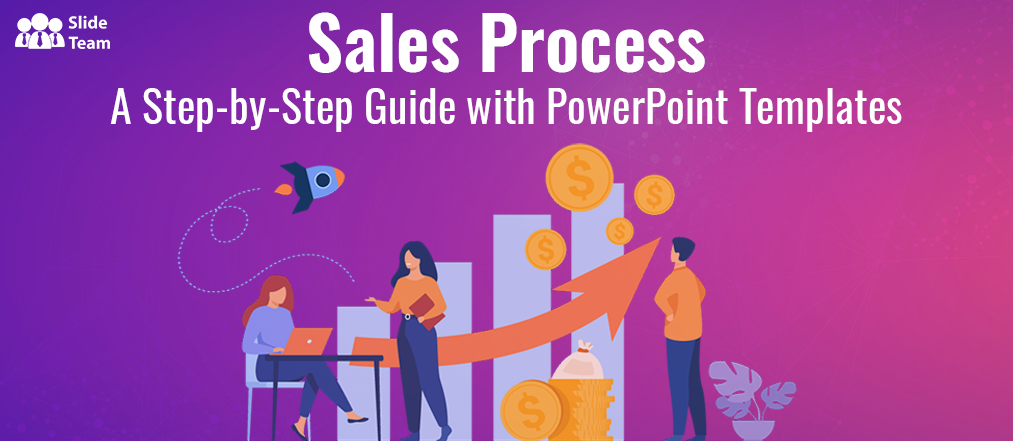


 Customer Reviews
Customer Reviews

